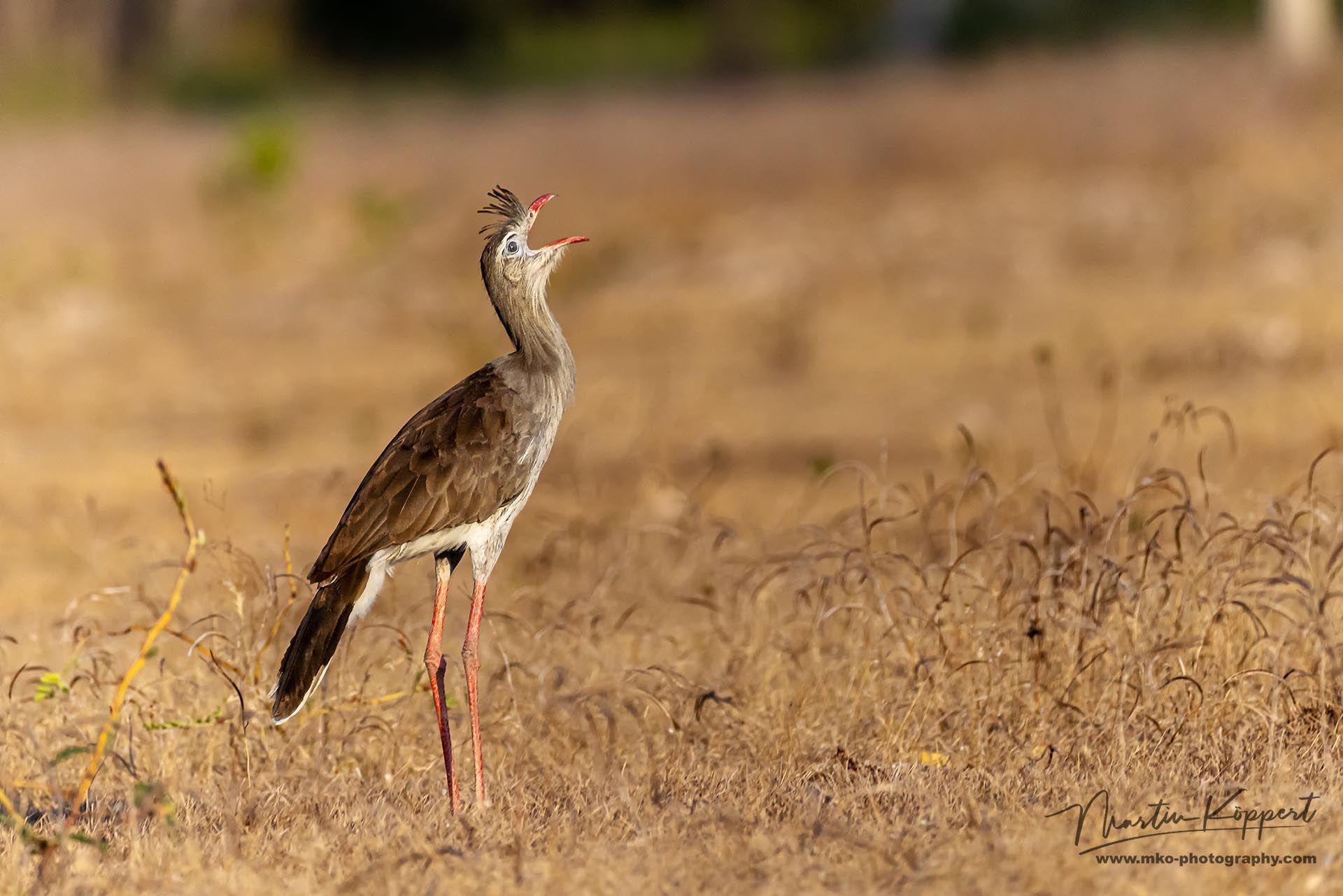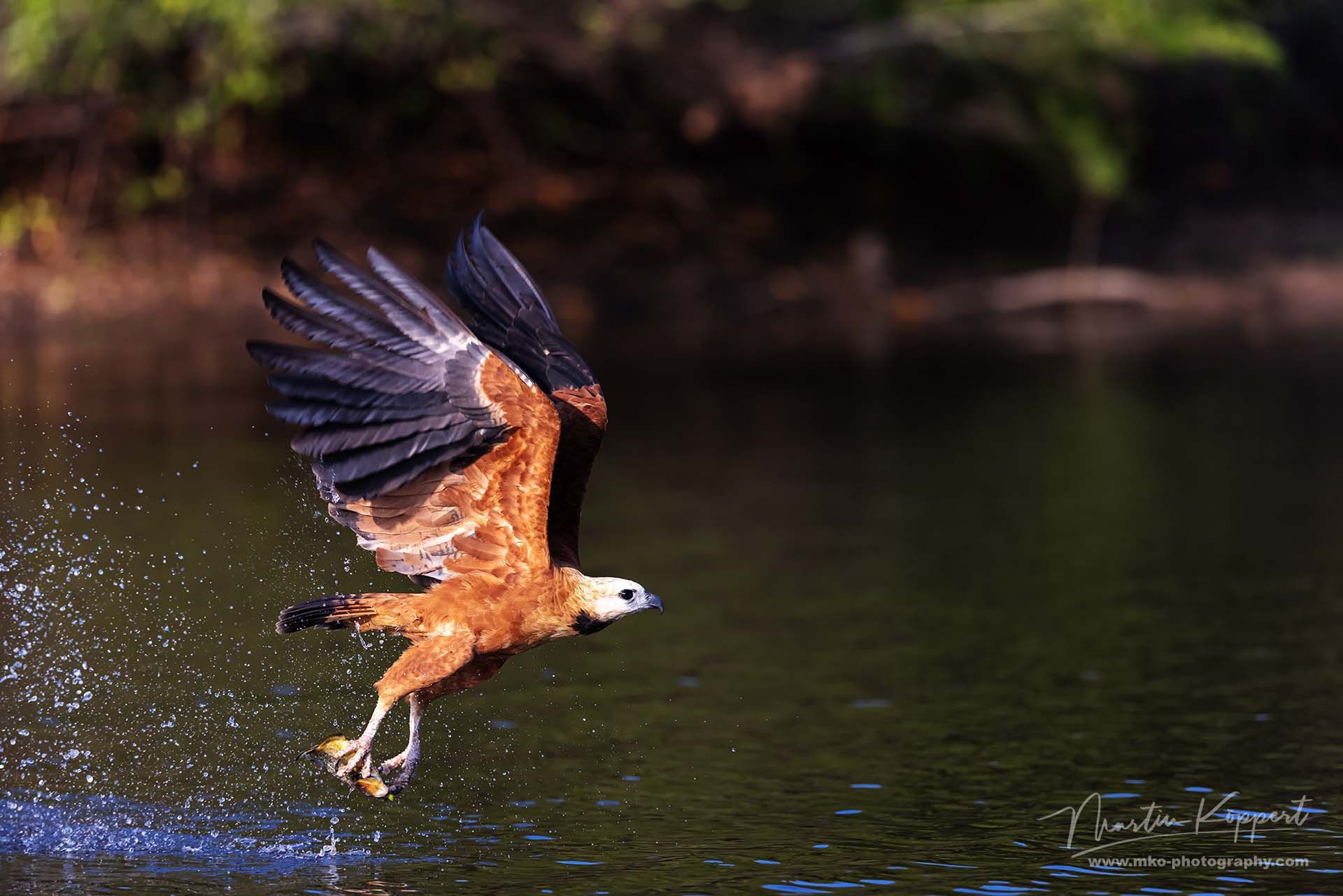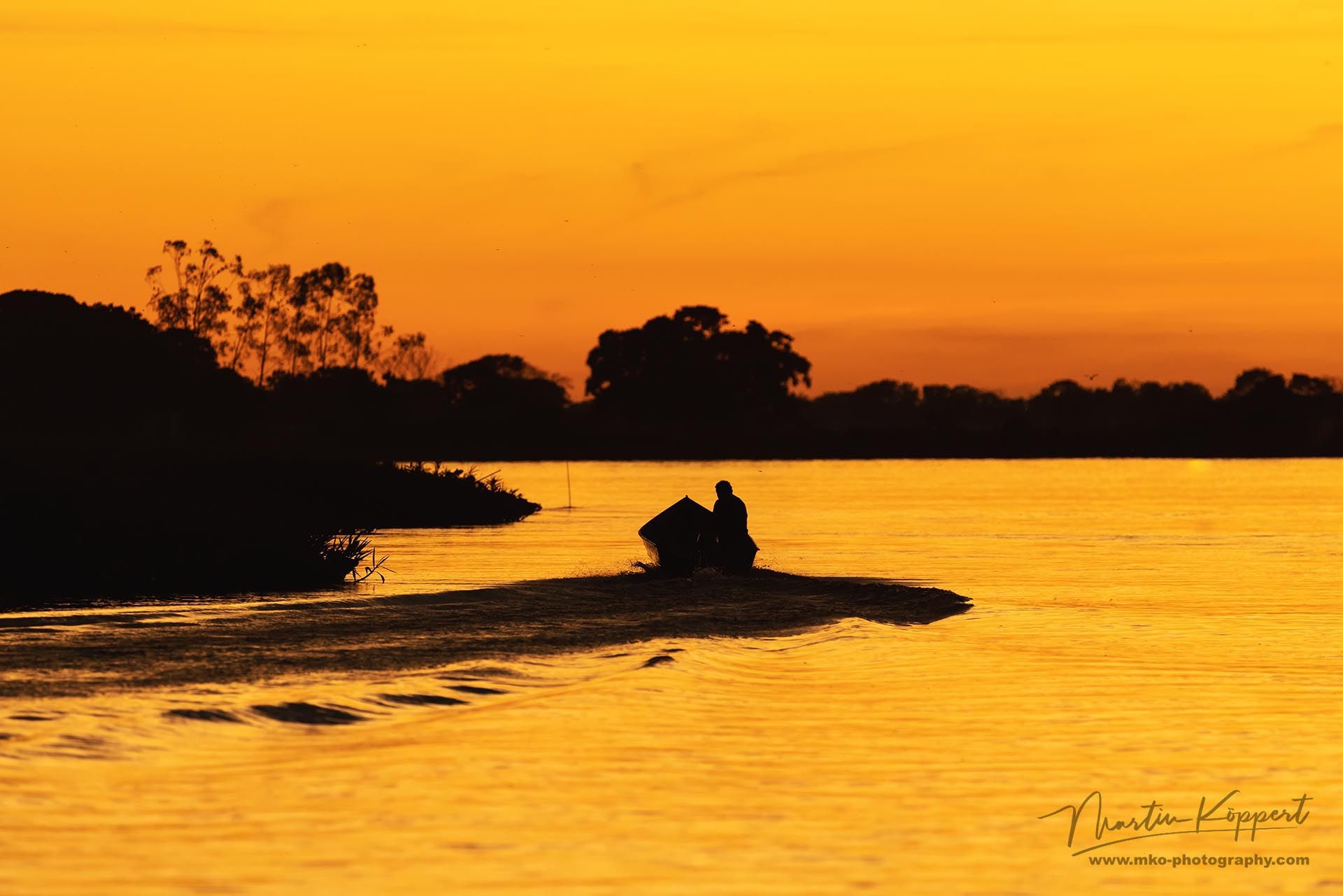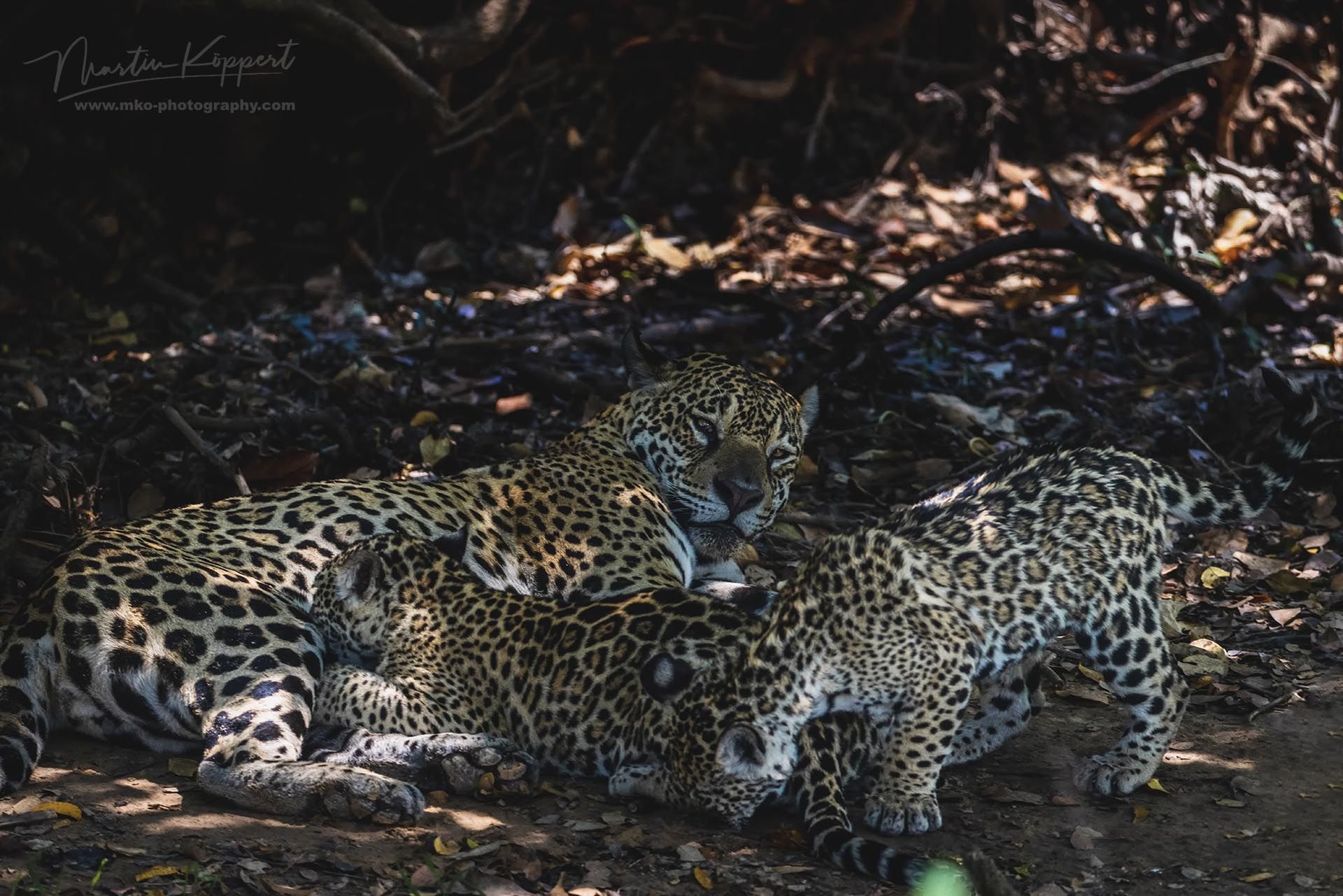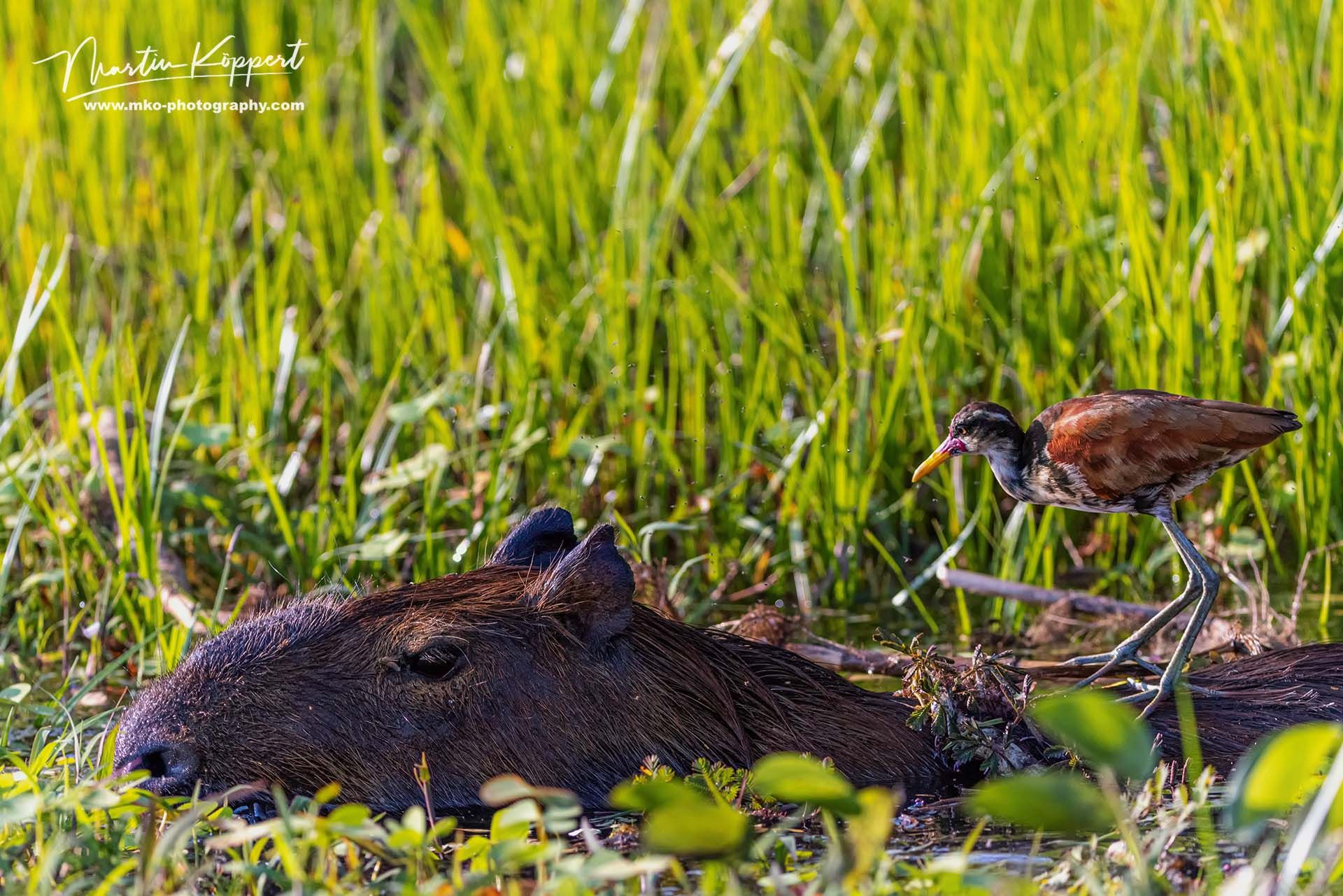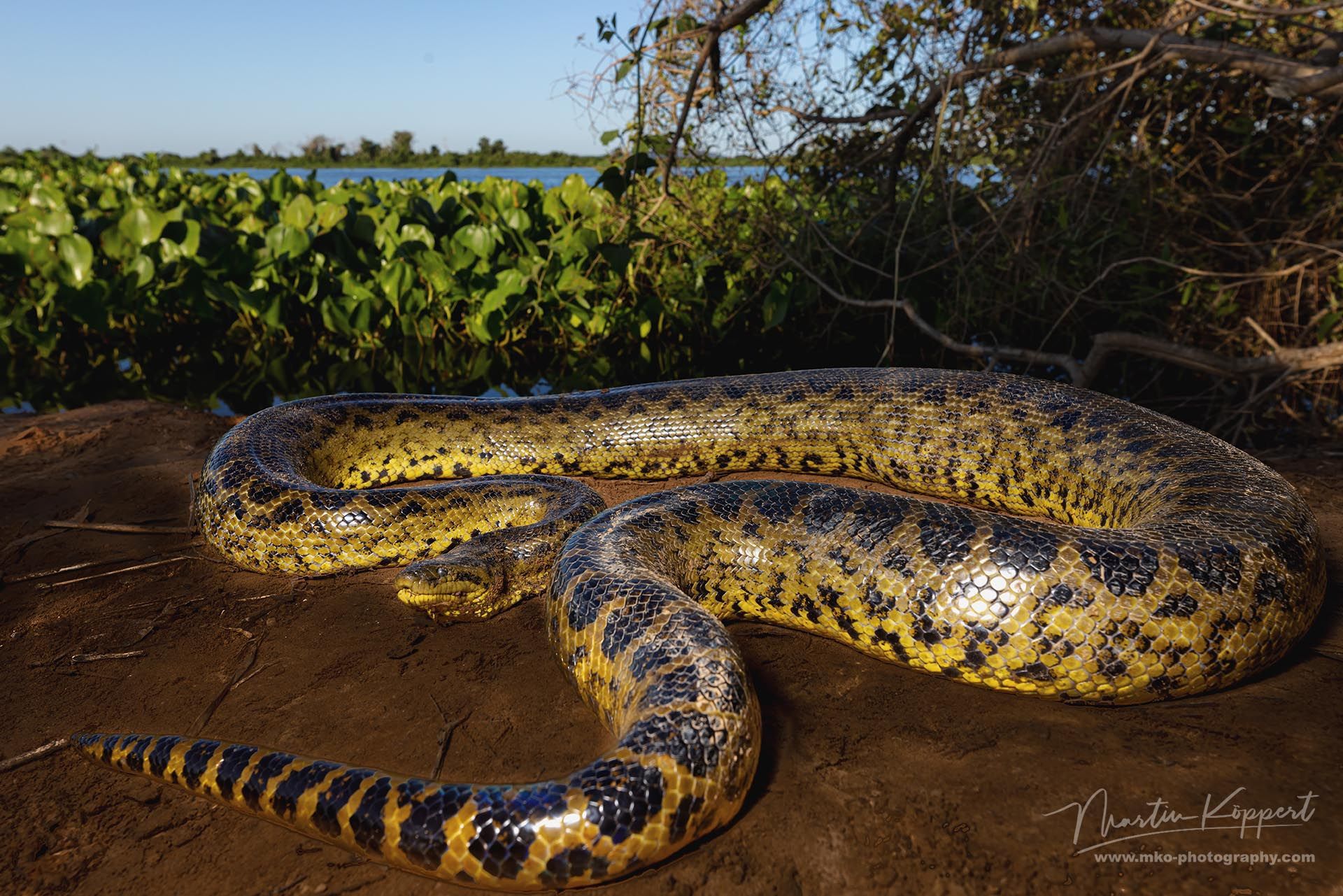In the north of the Pantanal, bordering the Cerrados, grass savannahs are widespread. Almost the entire ground is covered with plants. These are usually grasses and shrubs. Trees grow sporadically and small dry forests are often mixed into the landscape. The grass savannah is a habitat for the largest land mammals in South America, savannah birds, waterfowl and forest birds.
Many small and medium-sized rivers run through the Pantanal and form this widely ramified river system. The landscape is characterised by savannahs but also large areas of forest and hills, with numerous rivers, small canals and large lakes that also carry water during the dry season. The rivers are the lifelines of the Pantanal and a source of food for many animals, especially birds of prey, waders and waterfowl.
The Pantaneiros are the long-established people who have lived in the Pantanal for several generations and have their own culture, which is essentially based on cattle breeding. They are closely linked to the biome. Their customs and culture originate from their environment with its cycle of flood and drought. The Ribeirinhos, a subgroup of the Pantaneiros, are the people who live by the river and identify more with the water than with the land. Their main occupation is fishing and not livestock farming.
The jaguar is the largest cat of prey in South America. It can grow up to 2 metres long and weigh up to 150 kg. Jaguars are solitary animals and only come together to mate. Jaguars kill their prey by biting through the skull with their long canine teeth. During the dry season, when the animals are close to the riverbanks, is the ideal time to observe jaguars.
The rainy season offers the best opportunities for spotting reptiles and amphibians. Amphibians tend to favour moist habitats. During the rainy season, frogs and toads come out of their hiding places, which in turn attracts reptiles, especially snakes. This is because frogs and toads are important prey for many snakes. A few species of venomous snakes, constrictors and adders live in the Pantanal, with the yellow anaconda being the largest representative of the reptiles.
The rainy season offers the best opportunities for spotting reptiles and amphibians. Amphibians tend to favour moist habitats. During the rainy season, frogs and toads come out of their hiding places, which in turn attracts reptiles, especially snakes. This is because frogs and toads are important prey for many snakes. A few species of venomous snakes, constrictors and adders live in the Pantanal, with the yellow anaconda being the largest representative of the reptiles.


